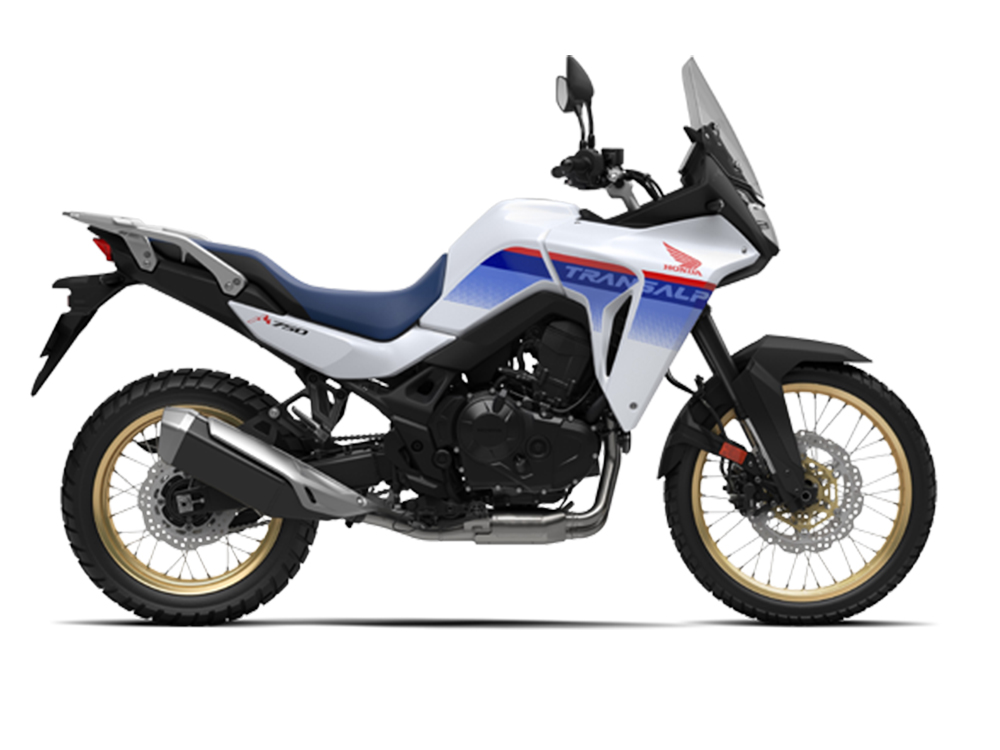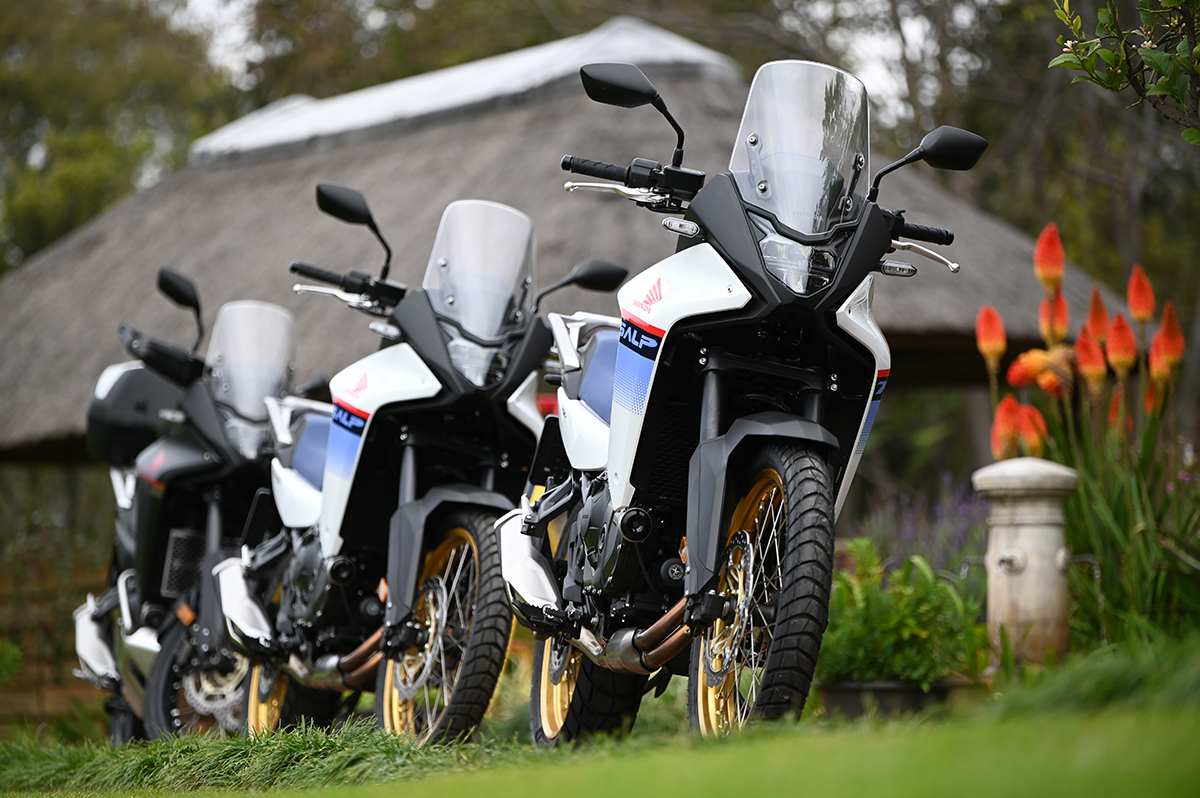
Honda introduced their new and much anticipated Transalp to the media at the ADA Training Facility near Hartebeespoort Dam. The Transalp has been a long-time favourite in Honda’s line-up. From the introduction of the first XL600 V Transalp, with its Dakar-inspired styling, and 50 HP V-Twin, way back in 1986, the Trannie has filled the lightweight Adventure /Utility bike slot in the Honda range.
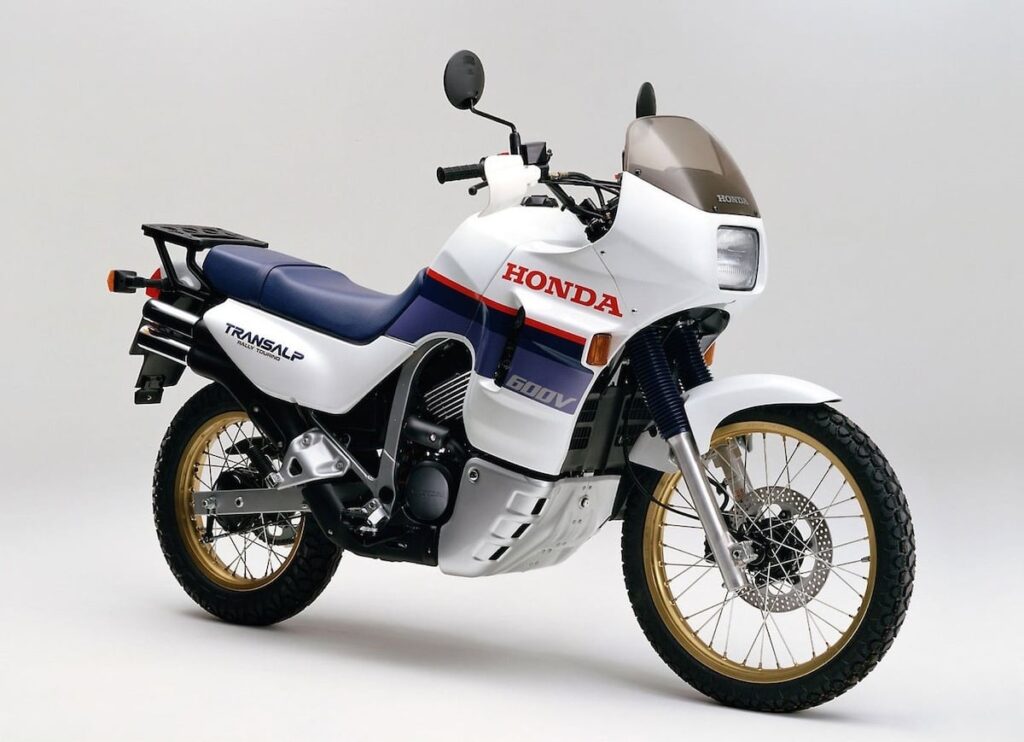
Upgraded to a 650 in 2000, it lost 4 kg and, if you stiffened up the soft suspension, was more than capable in the boondocks. I can attest to this as I rode the gnarly Pella 4×4 trail on the Orange River with mine, to good effect. Comfortable and capable.
The XL700 V version, with a more road orientated 19-inch front wheel, arrived in 2008. It was still surprisingly capable in the dirt, despite the more obvious road bias. The hard chargers had the legendary XL750 V Africa Twin if they wanted hard-core off-road performance.
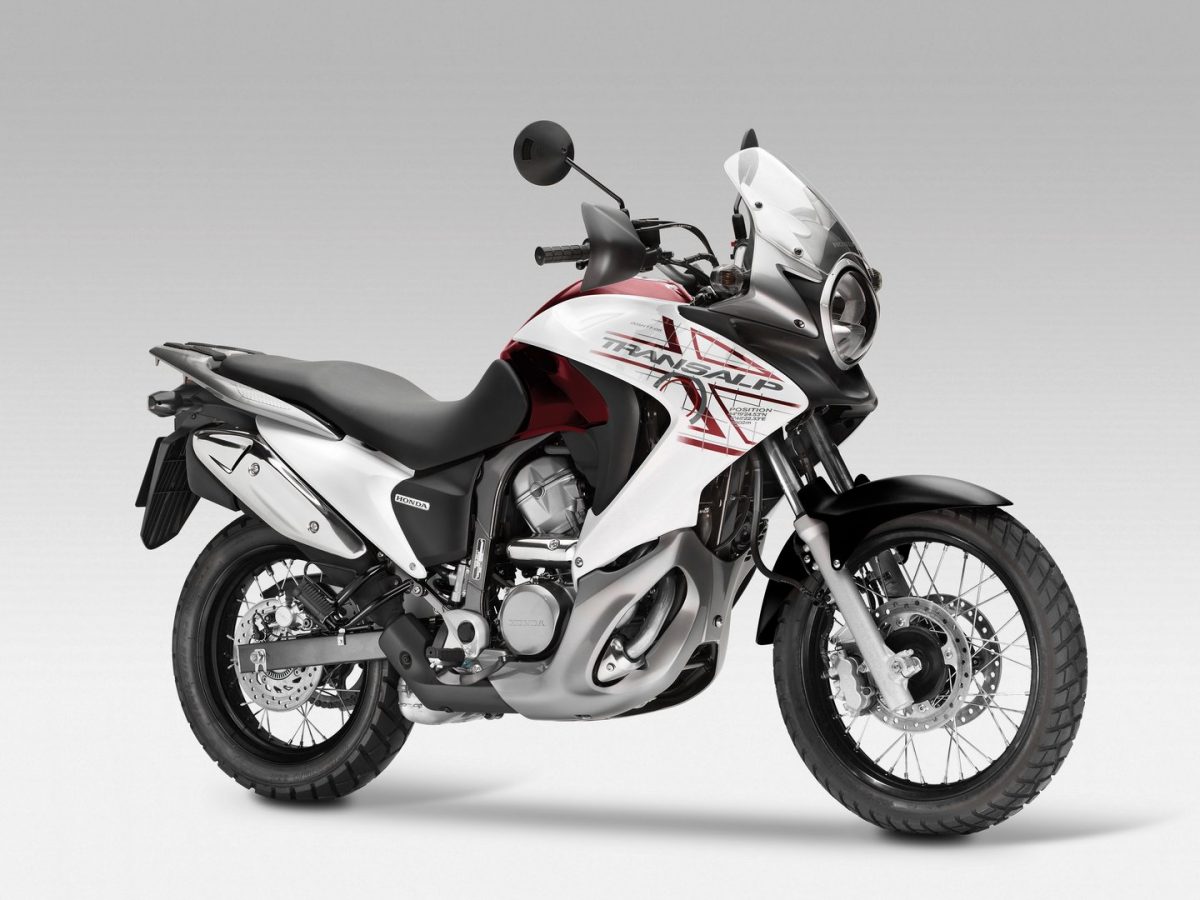
To best understand what Honda wanted to achieve with the new Transalp, I want to quote the Transalp Project leader, Masatoshi Sato San, “With our new Transalp we looked hard at what made the first model so good and wanted to strike the right balance between urban agility, long-distance, on-road touring comfort and off-road ability. In arriving where we are, we have considered all these aspects in a “360 degree” way, and created a bike that gives riders of all experience levels a fresh new option in the Honda range. The look revives the classic Transalp presence in a modern key, the new engine is incredibly strong and versatile, and the bike has an appealing long and rich specification list. Around town or around the world – our Transalp is ready!” After spending time on the bike I would say they hit the bull’s eye.
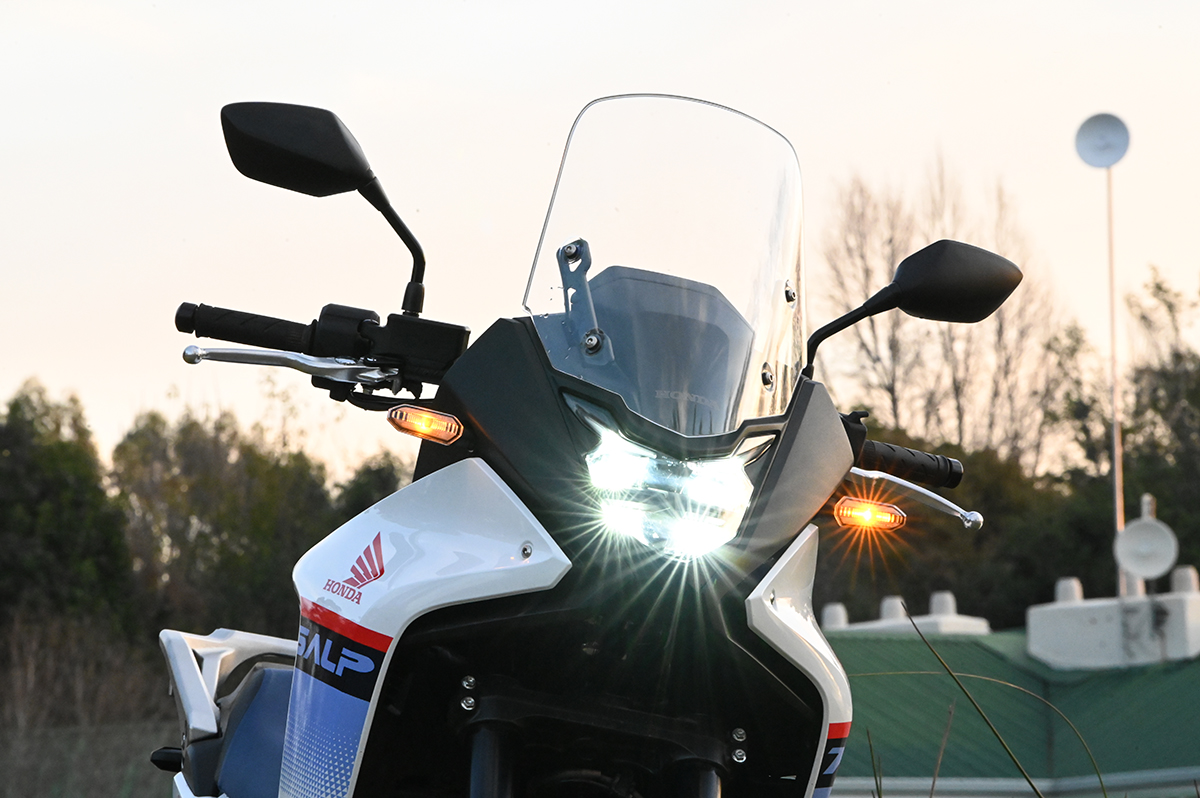
Which brings us to 2023. Honda has proven over the years that they know what we need (not want) better than we do. Take the phenomenally successful NC700/NC750 as a case in point. When the world was begging for high horsepower crotch rockets, they gave us the NC700 with 1980 levels of power, but significant low and midrange torque. Instant success! Only now, years later, can supply match demand.
Why do I tell you this? Because I hear the same chirps from people that have not yet ridden the 750 Transalp. Will it replace the Africa Twin, given its lightweight/high power numbers, or possibly outdance the Yamaha T7 in the dirt, given its similar wet weight and 16 horsepower advantage, mated to dirt-worthy wheel sizes?
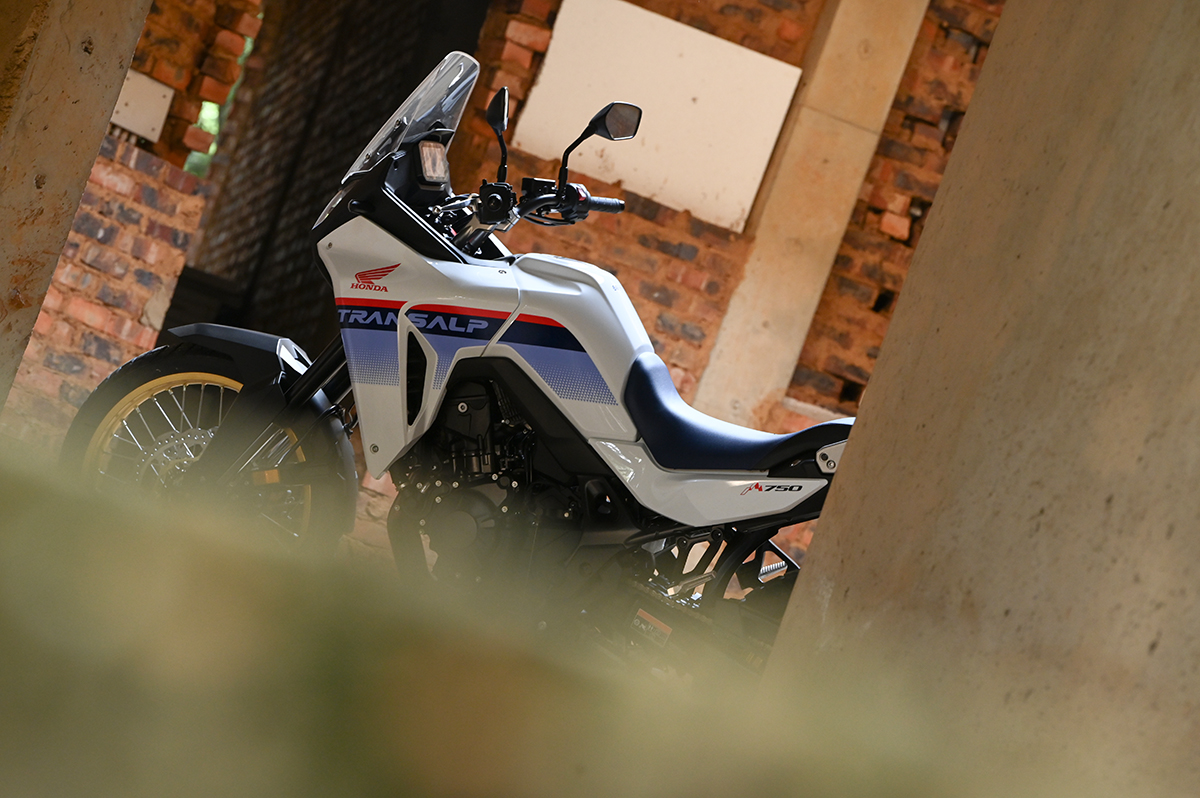
On the Africa Twin question, definitely not. The Trans is physically too small to fully match the two-up touring ability and more extreme off-road performance of which the AT is capable. The T7? Here it gets a little murky. I would go as far as to say that only in a technical dirt bike environment would the T7 have the upper hand. Everywhere else the Honda would triumph.
Enter buying with your heart versus buying with your head. All adventure bikers WANT Rally Replicas in their hearts. Something with which we can emulate Ross Branch’s exploits in the dirt. Sadly, very few actually have the skill to indeed rip it offroad. Even if we do, we NEED reliability, comfort, fuel range, two-up capability, less intensive servicing requirements and the ability to carry a passenger and luggage. How many T7 owners that you know have embarked on an extended two-up tour of Namibia on their T7s? Get my drift? If you are well-heeled you will have two bikes. Your go-anywhere dirt capable Adventure tourer, on which you can comfortably commute to work in the week. Your KTM 500 with a Rally Kit, or something similar, is your weekend dirt weapon. Enter the 2023 Honda Trans Alp.
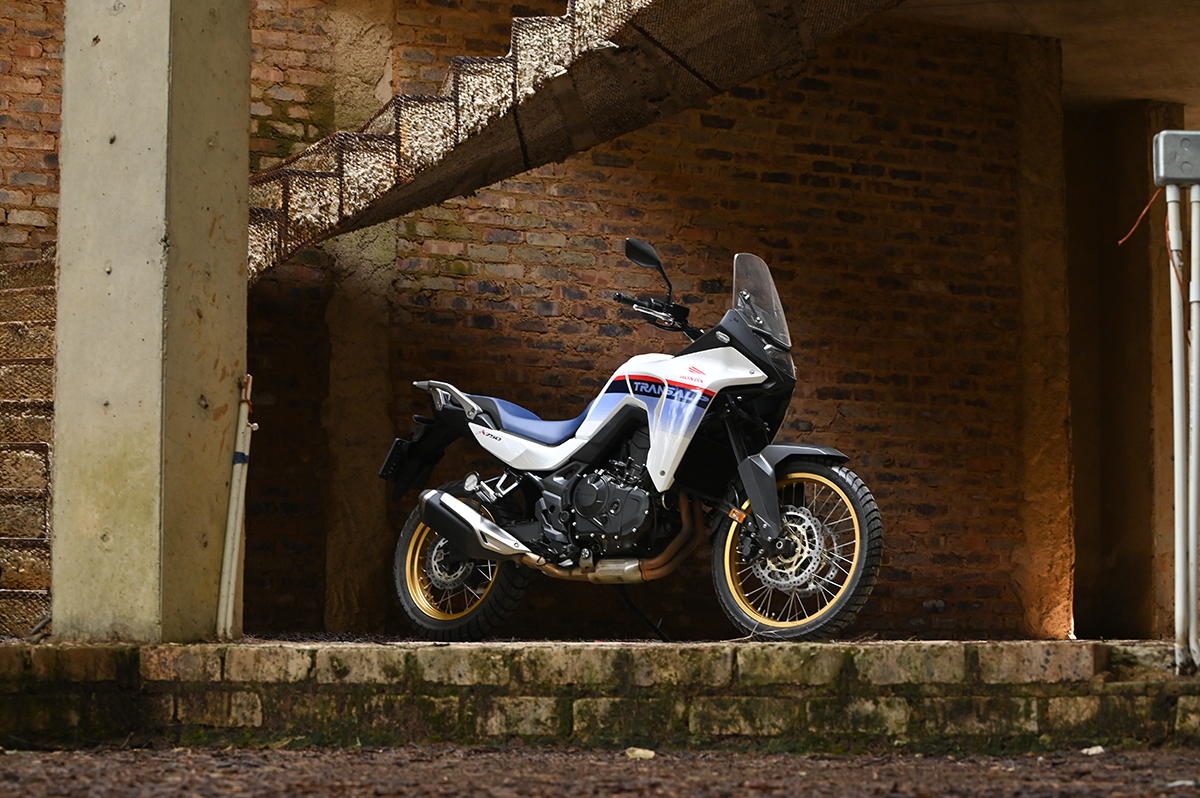
The Transalp is defined by its spectacular engine. A 755 cc’s, Unicam, 4-valve, liquid-cooled, 270-degree crank parallel twin with fuel injection and a surprisingly mild, by today’s standards, 11:1 compression ratio. 90 HP@9500 rpm and 75 Nm@7250. Impressive numbers indeed! Slipper clutch and a 6-speed box driving the back wheel by chain. The motor features innovations to make it both compact and light. The cylinders have the same Nickel-Silicon Carbide coating as used in the CRF450 R and Fireblade. The frame is steel (lighter than that in the CB500 X’s by 2-odd kg). The sub-frame is not detachable.
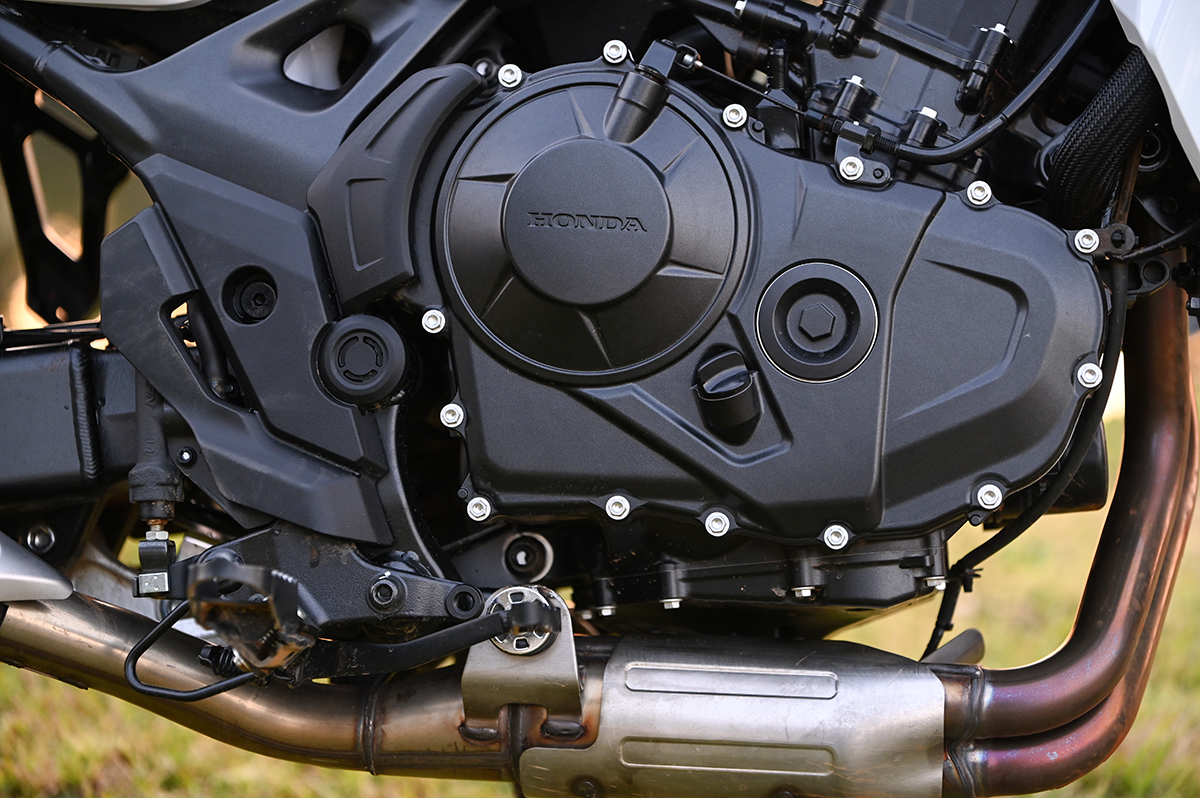
Front USD 43 mm Showa SFF-CA forks with 200 mm of travel, mated to a Pro-Link 190 mm travel, rear shock. Only 10 mm less than a Yamaha T7. Having said that, the Honda suspension is significantly firmer than the T7, somewhat negating the 10 mm of travel advantage of the Yamaha.
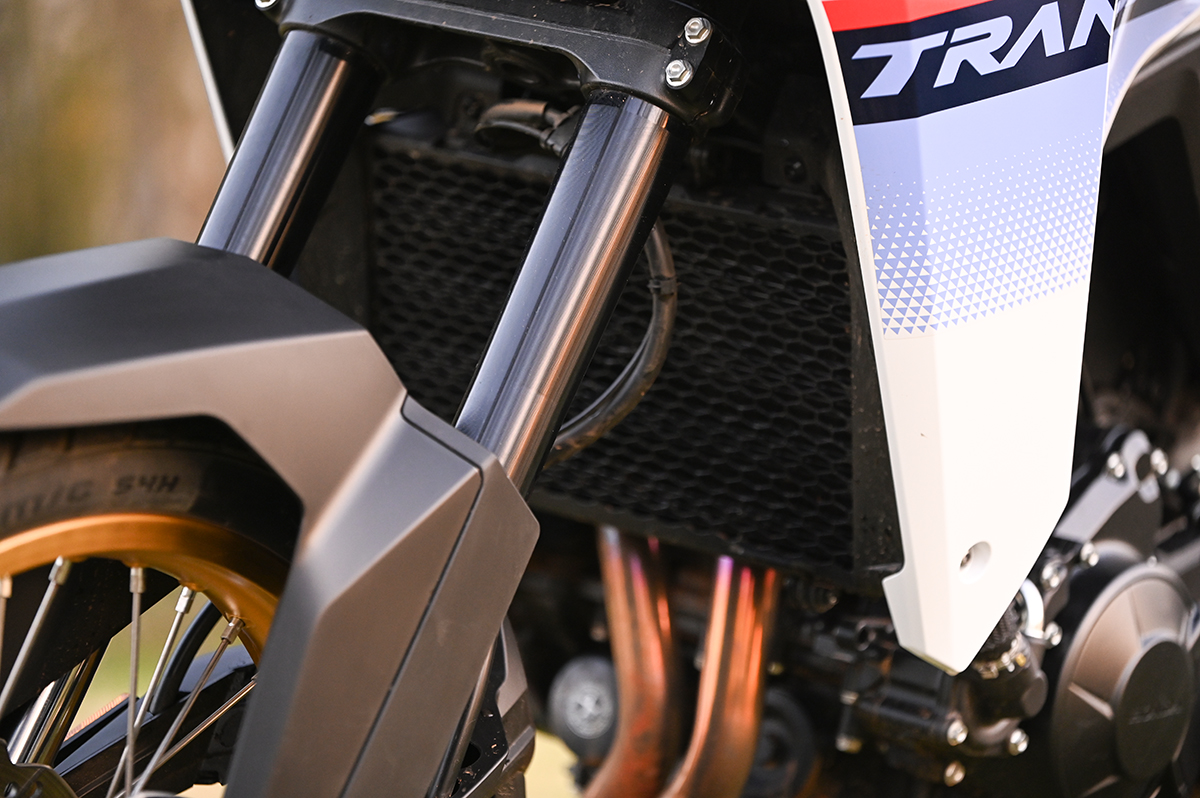
Wheels are 90/90×21 front and 150/70×18 rear mounted on tubed spoke rims. 27 degrees of rake suggest off-road stability. The wheelbase is 1560 mm.
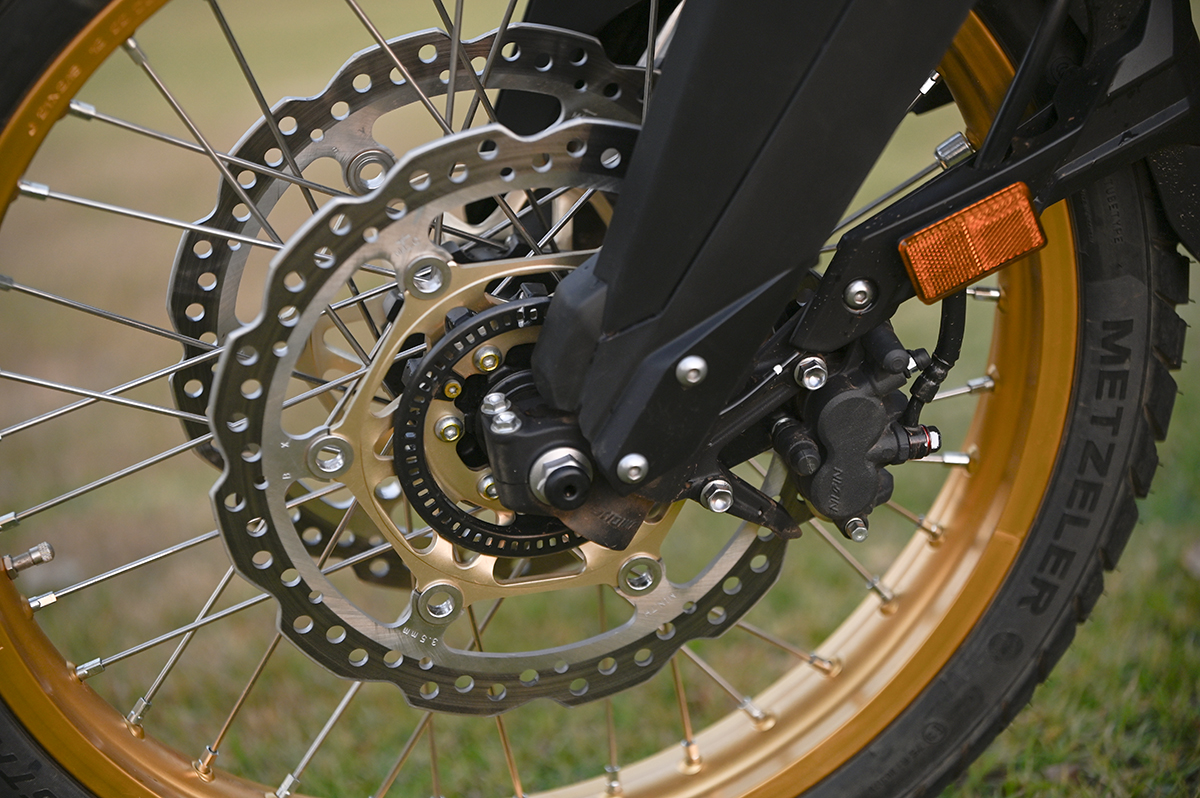
An 850 mm seat height makes the Trannie accessible to most. Ground clearance is 210 mm due to the exhaust collector running below the engine. Wet weight is a tidy 208 kg. Fuel capacity is 16,9 litres. Fuel consumption should be good at touring speeds, giving close to 400 k’s per tankful.
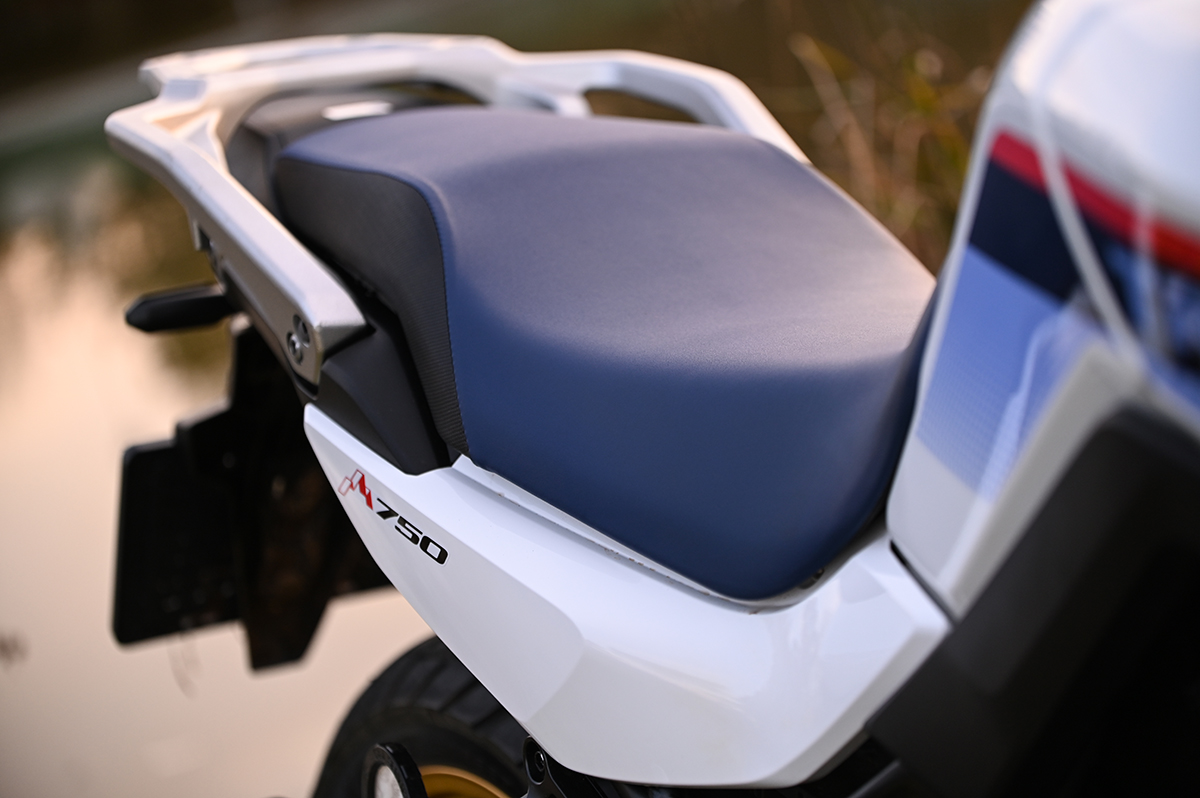
The styling is a modern take on the historic Transalp theme, especially in the heritage HRC, or “Ross White Tricolour” as Honda calls it, colour scheme. It looks spiffy in the Matte Iridium Gray Metallic package too. It is a handsome motorcycle. Those who wanted CRF 450 Rally looks may be disappointed, but to those who are the intended buyers, the Transalp is easy on the eye.
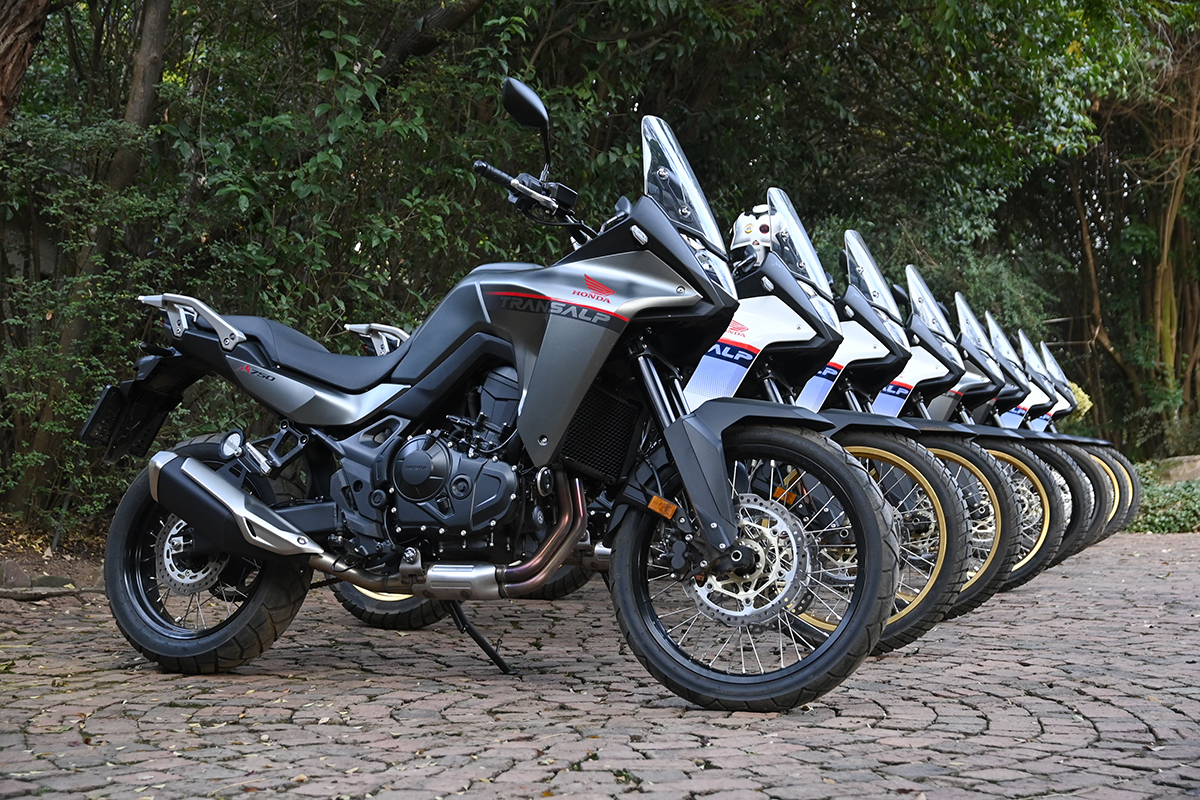
Fire it up and immediately the motor announces its dominant presence. It comes to life with a deep, throaty burble. Crack the throttle and an angry bark tingles the spine. Combine that exhaust note with some intake roar and it really gets the old juices flowing. Ease out the clutch and the Honda pulls away seamlessly. Low-speed handling is effortless, with absolutely no top-heaviness. It feels significantly lighter than a T7. Full lock turns are effortless. As the road opens up give it the beans and Oh Lordy, this motor rocks! The bike is planted, smooth and fast. It rails bends effortlessly and is extremely comfortable.
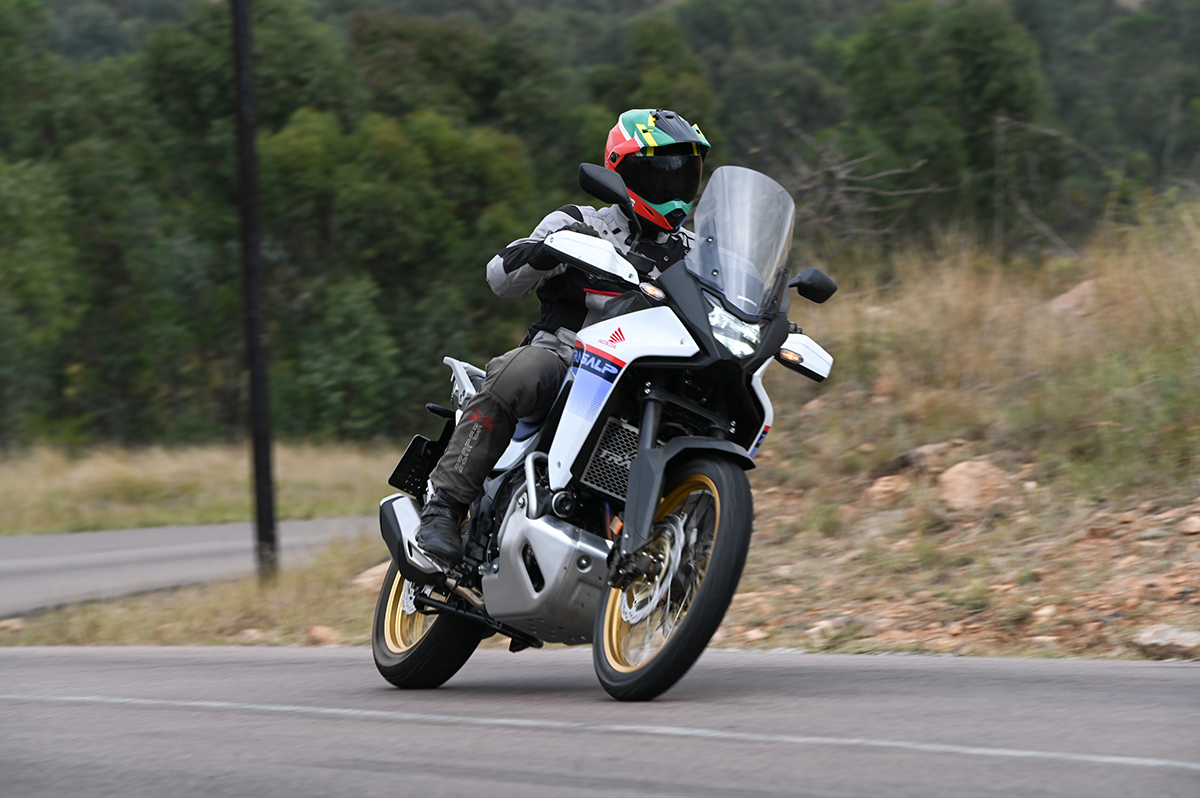
The standard screen does an excellent job of averting wind blasts without buffeting despite no adjustment option. 160 km/h cruising is a non-event with the bike feeling smooth and unstressed. More on that later. Five engine modes allow you to access power to suit the conditions. ‘User’ mode allows you to tailor it to personal preference as regards power, engine braking, traction control and on/off-road ABS. Unfortunately, settings revert to ‘default’ when the bike is switched off. The TFT display is clear and concise, offering different layout options, and easy to navigate around, a far cry from the confusion of the Africa Twin.
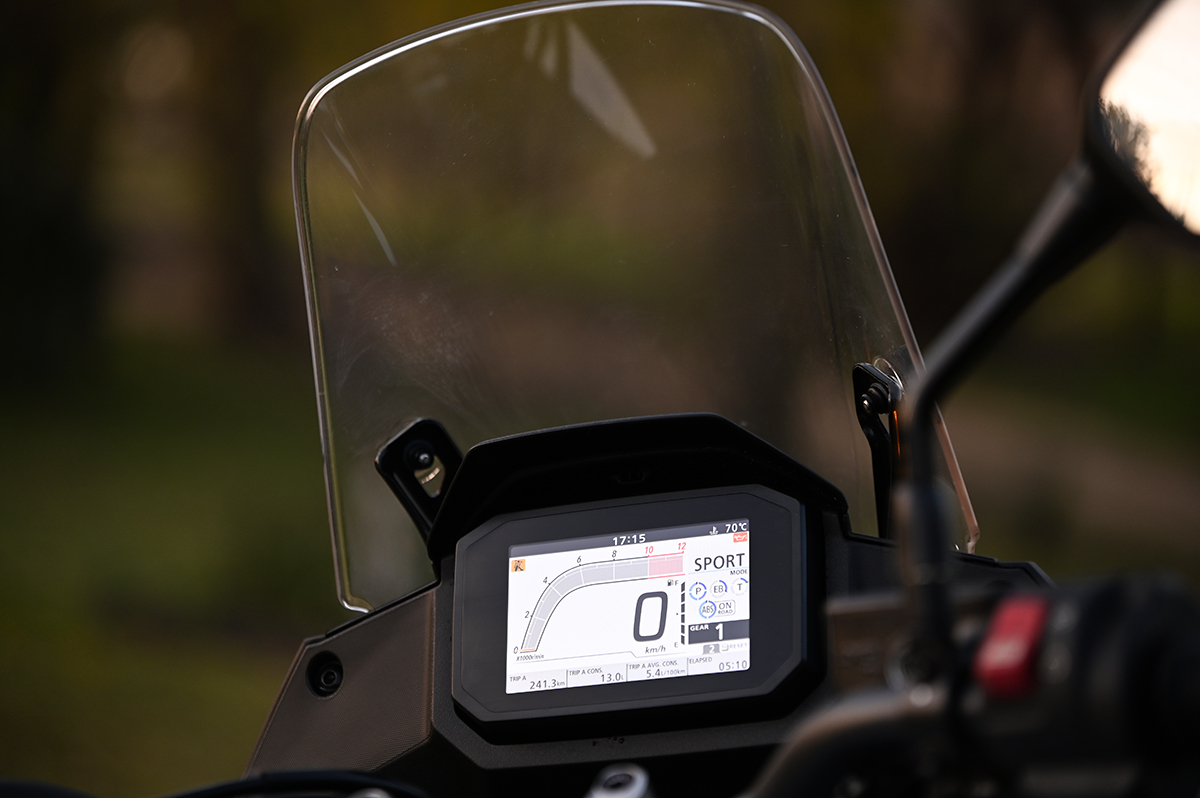
Our test route included both tar and dirt. Tar performance is pretty flawless, with the firm suspension keeping things tidy. There is no suspension damping adjustment, yet in truth, I can’t say I missed it. Next up was dirt. The week prior to the launch saw 80 mm of unseasonal rain. The result was dirt roads infested with dried mud grooves and potholes made by farm vehicles traversing the wet roads which subsequently dried. There was very little ‘dirt highway’ as such.
Following ADA’s Heine Engelbrecht down one of these roads I was hanging just out of his dust. Glancing down I was unnerved to see that we were running at 145 km/h. The Transalp was rock stable and coped with the conditions with aplomb. Unweighting the pegs for lurkers as one does, I did not bottom the suspension at all. I found myself asking what more does one really need for all road travel? And that really sums up what the Transalp is all about. A bike that is comfortable, fast and more capable on a variety of roads than is fair to expect.
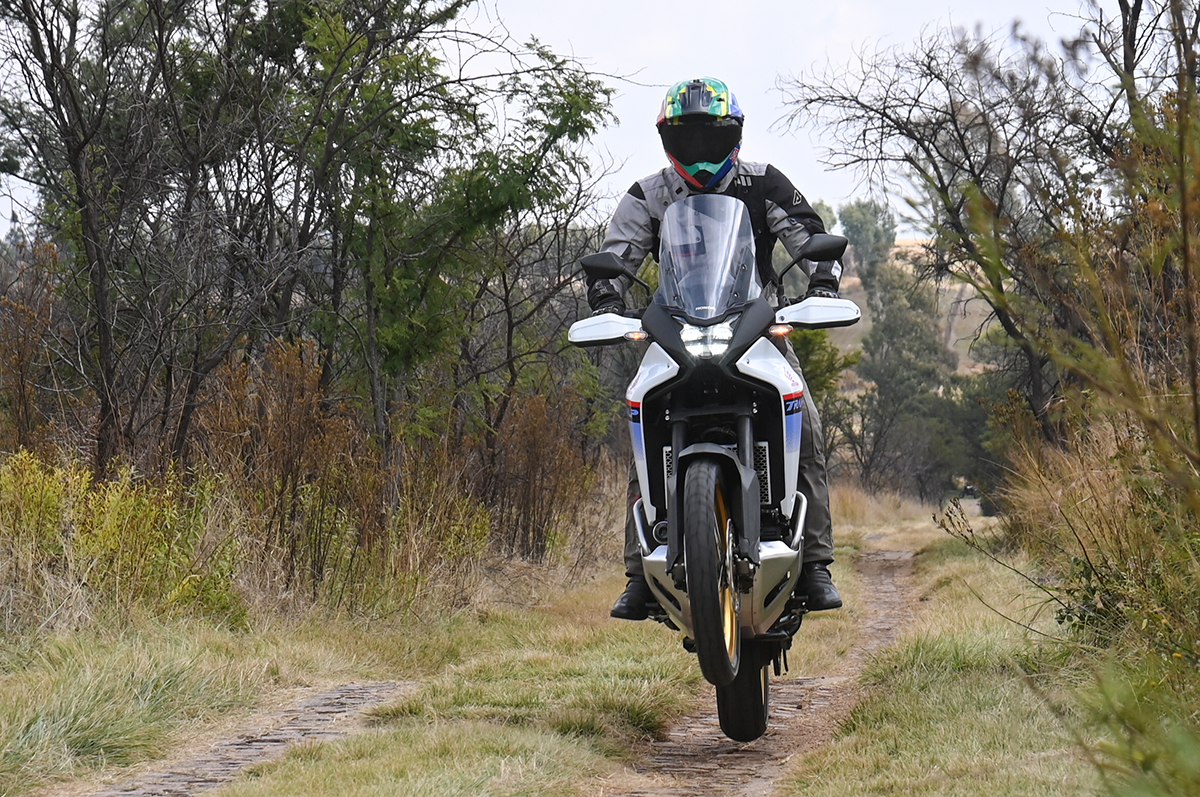
Honda have followed the lead of some of the European manufacturers who give you packaged accessories to pimp your ride for the purpose for which you intend to use it. For example, a ‘Touring Pack’ will give you luggage and a top box and so on. The ‘Adventure Pack’ with which the one bike was equipped had a decent bash plate, engine protection bars, wider offroad pegs, radiator guard and a taller screen as well as hand guards. This approach means that you are not forced to buy stuff that you don’t perceive a need for. Honda has launched the bike at an attractive R209,999. Whilst not inexpensive, it is extremely competitive in its sector, offering you a lot of bike for the money (the image below showcases all factory accessories available for the Transalp).
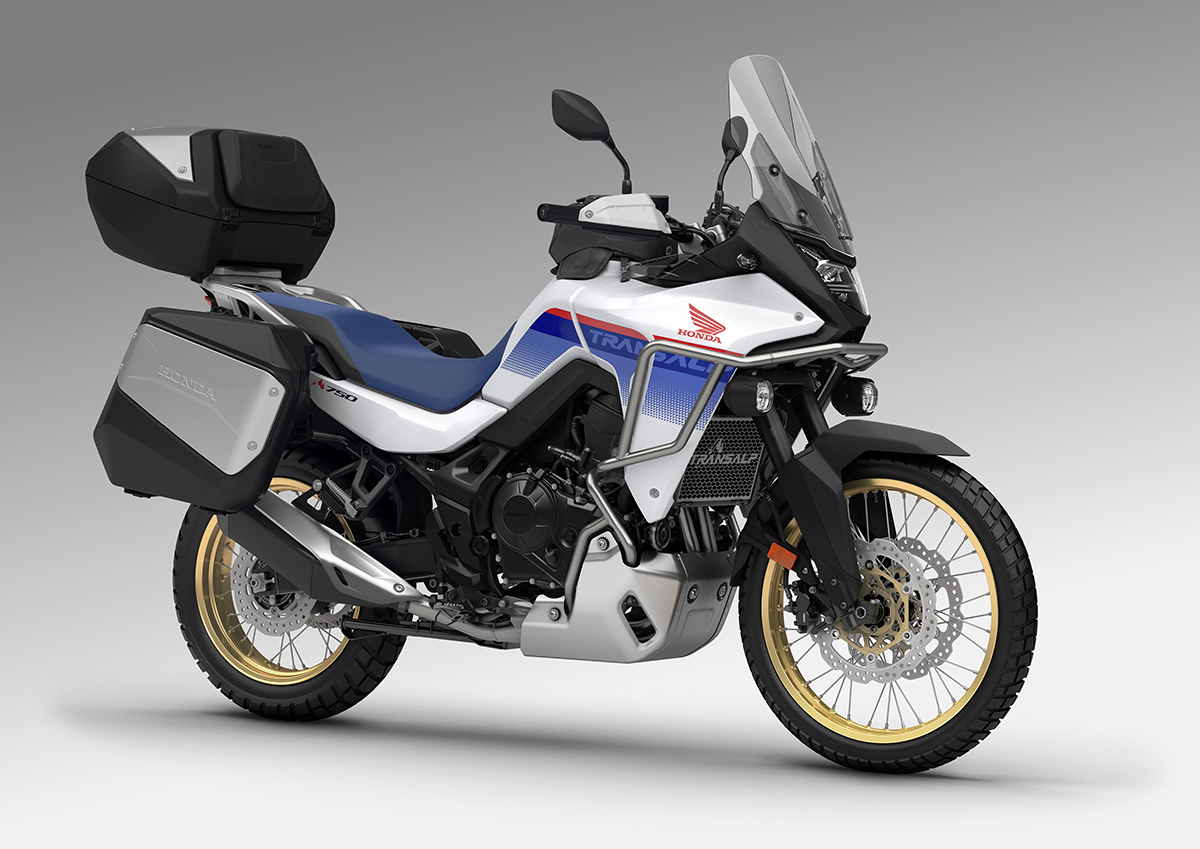
I noted something that I have not seen mentioned by any journalist internationally to date. Something which I believe can unlock further significant potential for prospective buyers. I am referring to the overall gearing of the bike. The Transalp is geared extremely tall. Let me put it in perspective. My Ducati Desert X, with a 950 cc 110 HP motor, is geared to run 220 km/h on the redline in 6th gear. This is more than adequate for a big adventure bike where long-distance speeds are 140/150 km/h. This equates to 22 km/h per 1000 revs in top gear.
The Transalp by comparison, even compensating for speedo error, is geared to run 260 km/h at redline in 6th. Despite this “over-gearing” the Transalp pulls like a train. But here is the thing. At 160 kph it is revving just over 6000 rpm. The peak torque is at 7250 rpm. If you wanted to be running at the torque peak you would be running at 188 kph. I am absolutely convinced that a tooth down on the front sprocket would elevate the real-world performance of the Transalp to even higher levels without compromising the bike in any way. Fuel consumption would improve as you are running closer to your torque peak, requiring less throttle for overtaking etc. It would then definitely be a case of ‘Africa Twin beware’, at the stoplights!
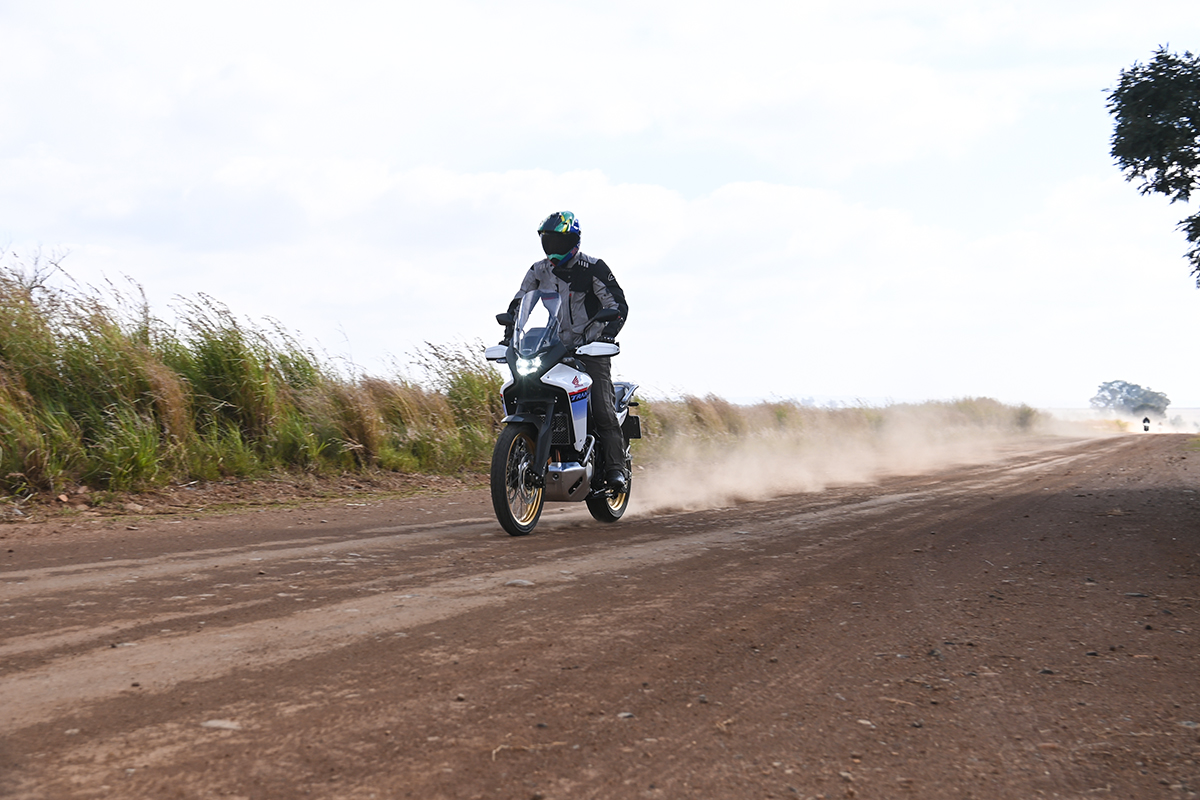
Journalists who have ridden both the Transalp and Suzuki’s new DL800, suggest that the Suzuki has more bottom-end grunt than the Honda. This is definitely more due to gearing than motor characteristics. With one tooth down on the front, the Transalp will idle up telephone poles and make low-speed technical off-road a pleasure! Way back in the ‘70s I experienced a similar scenario with my Honda CB500 Four. The bike was so over-geared that the bike could not rev out in top gear, limiting the top speed to around 180 kph. I dropped 2 teeth on the front sprocket which is quite extreme. The bike was completely transformed. It became punchy everywhere, nudging 205 on the red line. CB750s could not shake the little 500 anywhere. It would be no different with the Transalp. Many buyers may love the very relaxed standard gearing and be happy to drop a cog to overtake. Just be aware that the potential is there to make the hugely impressive Transalp even more so. Good job Honda, you have raised the Transalp flag to serious levels and shot a massive shot across the bows of the opposition. I hope you have serious levels of stock, ‘cause this bike is a winner!
Honda Transalp
For more information on the bike featured in this article, click on the link below…
The sting in the tail…
When I noted that the test route took us to Redstar Raceway, I thought Honda must really have confidence in the Transalp’s road manners to let us loose with it on the racetrack. I said as much to Honda’s Riaan Fourie. Riaan just smiled and said, “Dave, you are in for a surprise”. Surprised I was indeed! Lined up on the pit apron was a row of Honda Hornets, the Transalp’s naked Roadster sibling. Oh, my Sainted Aunt! That thing is more fun than a bag of monkeys! In transition to a road bike, the frame steepens the rake to 25 degrees, spoons in 17-inch wheels with sticky 120 front and 160 rear rubber, and shortens the wheelbase to 1420 mm. The seat shrinks to an accessible-to-anyone 795 mm height and lops off 18 kgs of weight. The motor is identical, as I think, is the gearing, but with the weight loss feels properly potent.
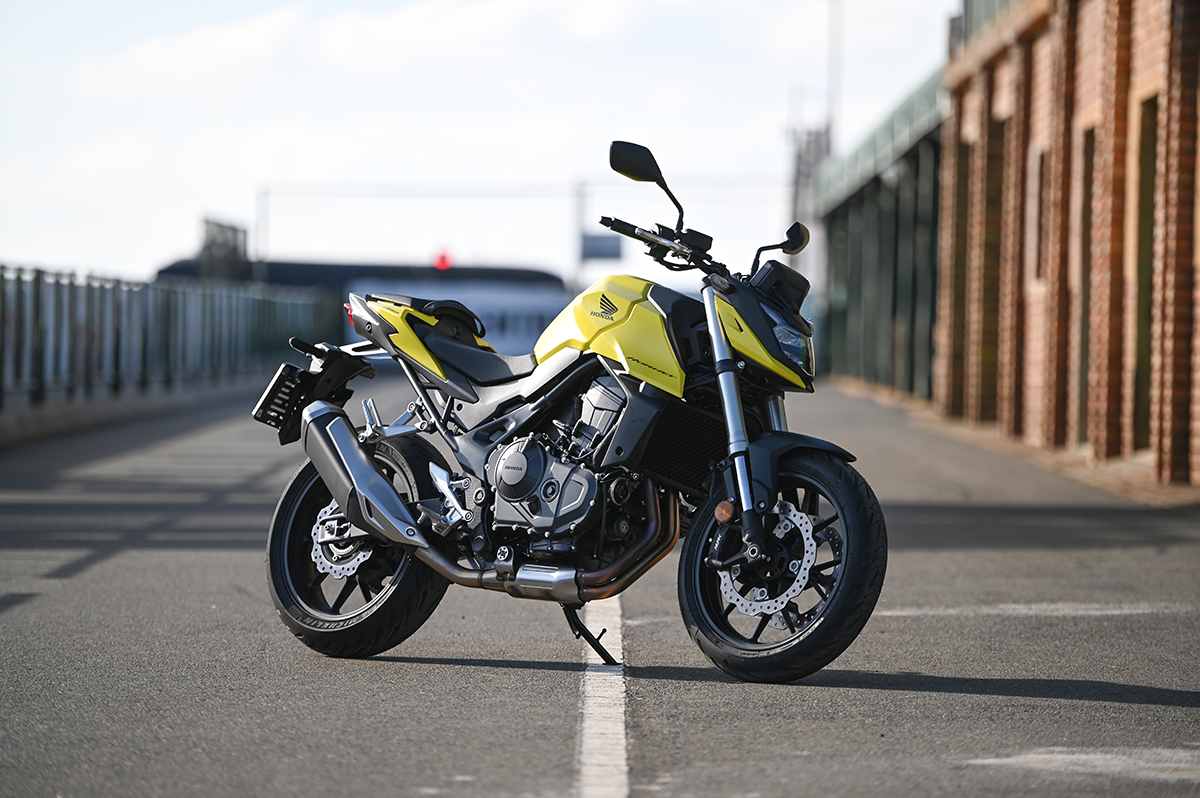
The bike turns if you just think about it. Despite my 6’3” frame I felt instantly at home on what is actually quite a small bike. The shortened clockwise circuit adapted for our test required only two gears. 3rd punched you out the corners with authority and 4th was good for 175 down the pit straight before employing the superb 4-pot Nissin double discs. The bike likes smooth input as it is so quick steering you can make it twitchy if you are ham-fisted. Fun with a capital F!!. Shorten the gearing on this little beast, as per my Trans Alp theory, and it will power-wheelie everywhere. I cannot wait to spend significant time on this bike…..Damn, I see a new bike coming on….pricing is still uncertain, but prepare to be pleasantly surprised.
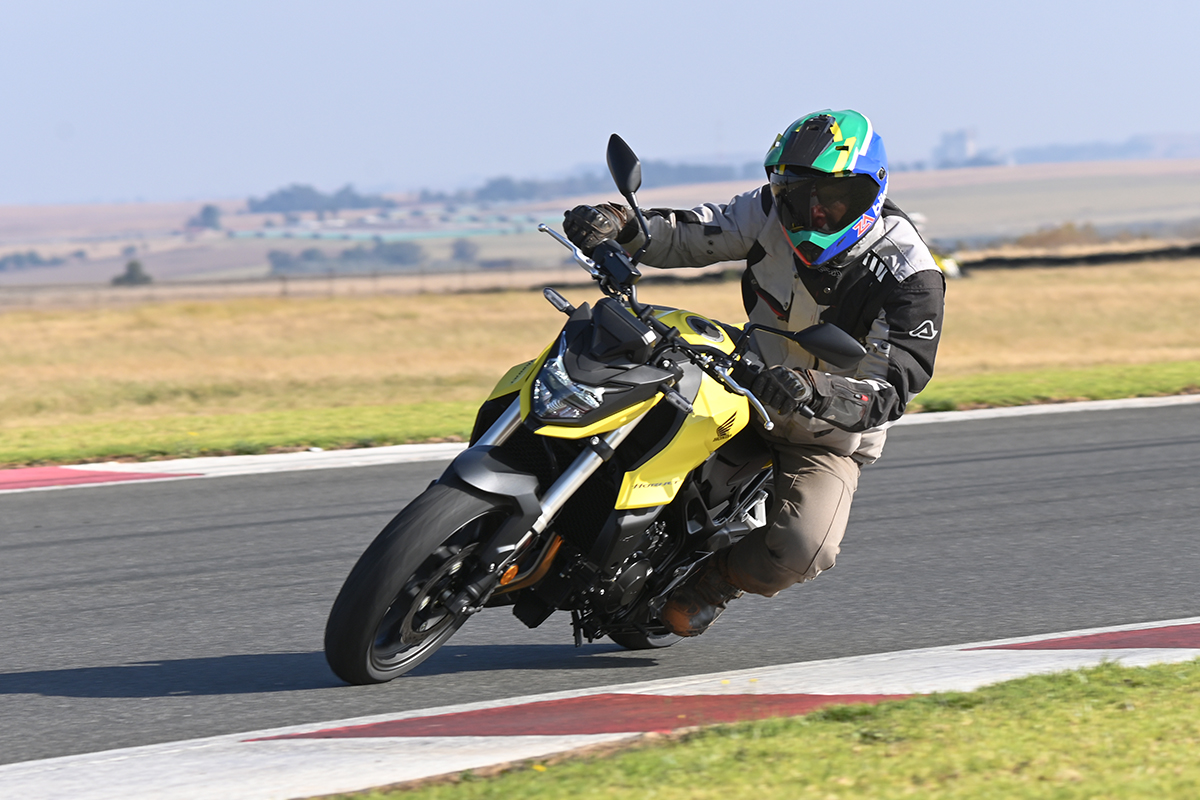
Huge thank you to Riaan Fourie and his dedicated and passionate Honda team, as well as Heine Engelbrecht and his team, for a magnificent launch. Consummate professionals the lot of you!




